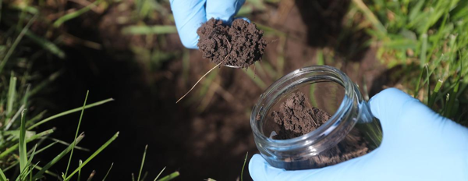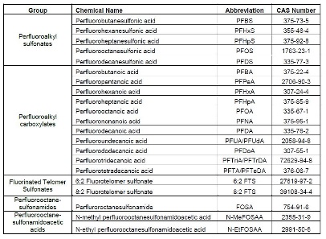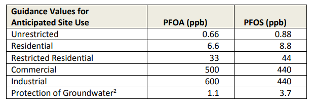
The New York State Department of Environmental Conservation (DEC) recently released guidance on sampling, analysis, and assessment of per- and polyfluoroalkyl substances (PFAS) in October of 2020. This guidance was developed by the DEC’s Division and Environmental Remediation (DER) to ensure consistency in analysis and reporting of PFAS. The new guidance outlines procedures for sampling media commonly analyzed under DER remedial programs: soils, sediments, or other solids and non-potable groundwater.
WHAT ARE PFAS?
Per- and Polyfluoroalkyl Substances (PFAS) are manufactured chemicals found in a wide variety of consumer and industry products. PFAS have strong chemical bonds that make them resistant to degradation in the environment and there is evidence that these chemicals cause adverse health effects.
REMEDIAL PROGRAMS IMPACTED BY NEW GUIDANCE
Remedial programs under 6 NYCRR Part 375 will be conforming to this new guidance when performing PFAS sampling and analysis. These programs include:
- Brownfield Cleanup Program
- Environmental Restoration Program
- State Superfund Program
- Voluntary Cleanup Program
GUIDANCE FOR SAMPLING
Whenever samples are collected and analyzed for the standard Target Analyte List/Target Compound List (TAL/TCL), PFAS analysis should be performed. At a minimum, reporting and analysis of PFAS should include all twenty-one (21) compounds listed on the PFAS Analyte List:

The guidance values below are to be used for determining remedial action objectives and cleanup requirements for soils if PFOA and PFOS are determined to be contaminants of concern at a site. The current guidance concentrations for PFOA and PFOS are low, in the parts per billion (ppb) range.

DEC developed this PFAS guidance ahead of the EPA. The EPA does not have a validated method for the analysis of PFAS in non-potable waters and solids. This guidance will be in effect until the final Soil Cleanup Objectives (SCOs) for PFOA and PFOS are published by DEC. SCOs will be proposed in the upcoming revisions to 6 NYCRR Part 375-6. Other PFAS initiatives being taken by NYS include the adopted Maximum Contaminant Levels (MCLs) for PFAS in drinking water. The New York State Department of Health established these MCLs for PFOA and PFOS at 10 parts per trillion (ppt).
SEE WALDEN’S OTHER BLOG ON PFAS:
States Starting to Roll Out MCLs for 1,4-Dioxane and PFAS in Drinking Water
Regulatory Update: EPA Announces Plan to Deal with PFAS
Walden’s environmental professionals have been tracking regulatory developments related to emerging contaminants. If you have questions about the DEC’s PFAS guidance, please contact Walden today!


